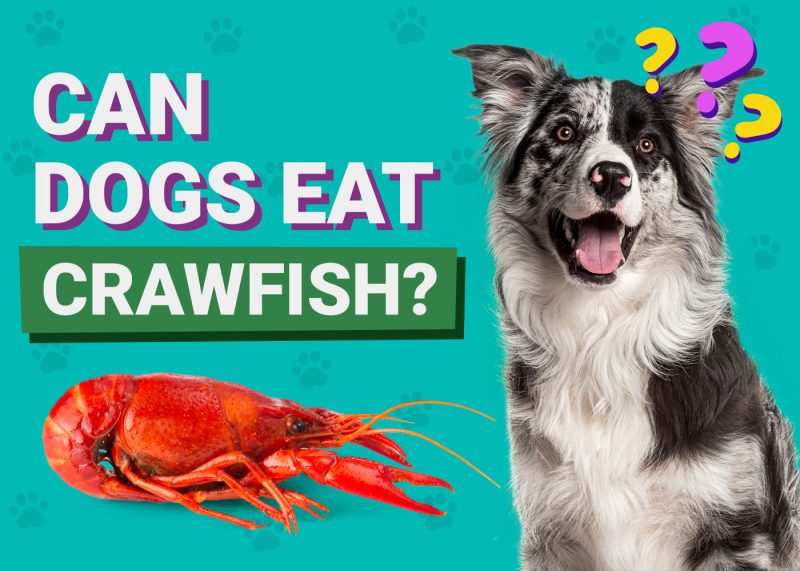In this article
View 8 More +The Belgian Sheepdog is a striking and exceptional dog that has the potential to become a fantastic companion for the right family.
Breed Overview
Height:
22–26 inches
Weight:
45–75 pounds
Lifespan:
12–14 years
Colors:
Solid black or black with white markings
Suitable for:
Active families with someone home and a house with a yard
Temperament:
Gentle, friendly, energetic, intelligent, watchful, loyal, loving
The Belgian Sheepdog is a highly energetic, working breed that is loving and loyal and absolutely adores their family. This dog is quite eye-catching and has been said to look like a combination of a Collie and a German Shepherd.
Belgian Sheepdogs are medium to large in size, with slender builds and long noses. They tend to be black all over, but they sometimes have white markings, and their fur is long and shaggy.
Belgian Sheepdog Characteristics

Belgian Sheepdog Puppies
The Belgian Sheepdog is not a common breed outside of Belgium, so you might have difficulty finding a breeder in your area. That said, it’s possible for you to fly a puppy to your location. Just ensure that you find an ethical breeder. One way to determine if they’re a good one is to ask them questions that they should be willing to answer. Reading online reviews is also helpful.
We typically recommend adopting rescue puppies or dogs, but the rarity of the Belgian Sheepdog makes this a near-impossibility. Still, keep an open mind and consider adoption.
Belgian Sheepdog Breed Origin & History
The Belgian Sheepdog was developed in the late 19th century and was initially listed as Chien de Berger de Races Continentales (Continental Shepherds), which also included German Shepherds, Hollander Herders, Bouviers, Briards, and Beauceron.
The Belgian Sheepdog’s existence is credited to breeder Nicolas Rose, who purchased the original foundation couple around 1890. The breed was developed due to the high demand for cattle herding, particularly dairy cattle, as Belgium was a leading exporter of milk chocolate at the time.
By the beginning of the 20th century, Belgian Sheepdogs were finding their way to Paris and New York and were used quite successfully as police dogs and for border patrols. During World War I, they were ambulance and messenger dogs and continued their service as war dogs during World War II.
The American Kennel Club recognized the Belgian Sheepdog in 1912, and they are still often used as police, search-and-rescue, service, and watchdogs.

Temperament & Intelligence of the Belgian Sheepdog
Belgian Sheepdogs were bred to work, specifically for herding and guarding livestock. They are known for their bravery, vigilance, and attentiveness, which makes them excellent watchdogs, especially when it comes to their loved ones.
In addition to their strong work ethic, Belgian Sheepdogs are known for their gentle and loving nature, high intelligence, and considerable energy. Due to their herding instincts, they tend to be more serious-minded, but they are also quite affectionate and sensitive.
Are These Dogs Good for Families? 👪
Belgian Sheepdogs make excellent family companions, but if you have young children, it is recommended that you start with a puppy raised alongside them. Since they are herding dogs, they might be prone to nipping at the children’s heels.
If you have an adult Belgian Sheepdog that is unfamiliar with children, it’s best if your kids are older, but regardless of age, they must be taught how to treat dogs. This includes not riding the dog or pulling their ears or tail. Involving kids in caring for the dog can strengthen their bond and instill a sense of responsibility.

Does This Breed Get Along With Other Pets?
The Belgian Sheepdog can get along with other pets, particularly when raised with them from a young age. They can be wary of unfamiliar dogs and are prone to herding and nipping at the heels of smaller animals. It is important to provide them with plenty of socialization to ensure that they develop positive relationships with cats and other canines.

Things to Know When Owning a Belgian Sheepdog:
Food & Diet Requirements 🦴
A Belgian Sheepdog requires a high-quality diet that is tailored to their current age and weight and that supports a high-energy breed. To determine what kind of food will best sustain your pet, speak with your veterinarian, and follow their recommendations regarding how much and how often to feed your dog. Go easy on treats to avoid obesity, and don’t feed your dog any table scraps. This will help prevent obesity, but many human foods can also be toxic to dogs.
Lastly, ensure that your Belgian Sheepdog always has access to clean and fresh drinking water. Water should be available to them at all times.
Exercise 🐕
Owning a Belgian Sheepdog means getting a great deal of exercise! This breed is highly active and needs about 2 hours of exercise daily. This should include the usual walks, along with opportunities for running and playtime. Belgian Sheepdogs require physical and mental exercise, and they will excel in dog sports, including agility, tracking, or herding competitions. You can also consider taking them out when you’re biking or jogging. However, it’s crucial to note that their exercise needs must be met with you, not when left alone.

Training 🎾
Training a Belgian Sheepdog can be relatively easy due to their high intelligence and eagerness to please their owner. To make the training sessions easy and effective, keep them short but spread out over the course of the day, and always use positive reinforcement. You can also integrate training with their exercise and playtime to keep them engaged and interested.
It is essential to socialize a Belgian Sheepdog as early as possible to help them form positive relationships with other animals and strangers, which can prevent reactive behavior. Socialization will give the dog confidence and prevent more aggressive behavior.
Grooming ✂️
Belgian Sheepdogs have long, shaggy hair with a double coat that requires brushing about twice a week. Regular grooming can reduce shedding in your home. You’ll need to brush your dog daily to manage the shedding during the fall and spring shedding seasons.
You should only give your Belgian Sheepdog an occasional bath when they are particularly dirty. Frequent baths can cause dry and irritated skin, so be sure only to use a good dog shampoo. The Belgian Sheepdog will also need their nails trimmed monthly, their teeth brushed daily (or at least a few times a week), and you should check and clean their ears around once a month.
Health and Conditions 🏥
The Belgian Sheepdog is generally healthy, but like any breed, they are susceptible to certain problems. Although the following conditions are known to affect Belgian Sheepdogs, it is not guaranteed that your dog will develop any of them.
- Progressive retinal atrophy
- Cataracts
- Elbow dysplasia
- Hip dysplasia
- Hypothyroidism
- Epilepsy
- Sensitivity to anesthesia
- Cancer
Male vs. Female
Female dogs tend to be lighter and smaller than male dogs, and the Belgian Sheepdog is no different. Female Belgian Sheepdogs are 22 to 24 inches in height and weigh 45 to 60 pounds, whereas males are 24 to 26 inches and weigh 55 to 75 pounds.
In terms of temperament, the differences tend to be more pronounced when the dogs are intact, but spaying and neutering can help lessen a few of the more notable behavioral issues. Male dogs are often more territorial and aggressive, but neutering can alleviate these tendencies to a certain extent.

3 Little-Known Facts About the Belgian Sheepdog
1. The Belgian Sheepdog Has Three Close Relatives
The Belgian Sheepdog is closely related to the Belgian Shepherd Laekenois (which is fawn colored and rough haired), the Belgian Malinois (fawn and mahogany, with short hair), and the Belgian Tervuren (fawn and mahogany, with long hair). All four breeds are almost identical in physique but differ in their coats in terms of color, length, and texture. They also all belong to the Belgian Shepherd Dog family.
2. The Four Shepherd Dogs Are Sometimes Considered the Same Breed
The Belgian Sheepdog, Belgian Shepherd Laekenois, Belgian Malinois, and Belgian Tervuren are considered the same breed by many people and are put under the umbrella name of Belgian Shepherd Dog. This can help explain why they all look alike except for their coats.
3. The Belgian Sheepdog Is Also Known as the Groenendael
The Belgian Sheepdog was bred in a small Belgian village by the name of Groenendael (pronounced Groan-en-dahl), which is also what they are named after.


Final Thoughts
Belgian Sheepdogs are energetic working dogs that can be relatively easy to train and serve as affectionate and gentle companions. They aren’t typically recommended for first-time dog owners unless you do your research and have the time and patience to work with them.
But these beautiful dogs are incredibly intelligent and need someone home with them for much of the day. They’ll repay you in spades with true love and devotion.
Featured Image Credit: icemanphotos, Shutterstock


















